The Bedtime Shema Prayer, known as Kriat Shema al Hamitah, is a central Jewish prayer recited before sleep, affirming faith and expressing gratitude, seeking forgiveness and renewal.
What is the Bedtime Shema Prayer?
The Bedtime Shema Prayer, or Kriat Shema al Hamitah, is a Jewish prayer recited before sleep, serving as a declaration of faith and connection to God. It is an extended version of the traditional Shema prayer, incorporating additional blessings and passages that reflect on the day’s experiences and seek forgiveness. The prayer emphasizes gratitude for life, requests protection during sleep, and expresses hope for spiritual renewal. It is a meaningful ritual that helps individuals reflect on their actions and prepare for the next day with mindfulness and intention. The Bedtime Shema is a cherished practice in Jewish tradition, fostering a sense of closeness to faith and community;
Significance of the Shema in Jewish Prayer

The Shema holds profound significance in Jewish prayer, serving as a declaration of faith and a cornerstone of Jewish identity. It is a testament to the belief in one God and the divine covenant with the Jewish people. Recited twice daily and at bedtime, the Shema is a constant reminder of spiritual commitment and connection to tradition. Its words, rooted in the Torah, encapsulate the essence of Jewish belief and practice. The Shema is also a unifying force, bridging generations and communities through its universal recitation. In the bedtime context, it provides a moment of reflection and gratitude, reinforcing faith and seeking divine protection during sleep. This prayer is a vital part of Jewish worship, fostering a deep sense of spirituality and continuity.
Overview of the Bedtime Shema Ritual
The Bedtime Shema Ritual, known as Kriat Shema al Hamitah, is a meaningful Jewish practice performed before sleep. It involves reciting the Shema prayer, along with additional passages and blessings, to reflect on the day and prepare for rest. This ritual is a moment of spiritual connection, fostering a sense of gratitude and humility. It also serves as an opportunity to seek forgiveness and renewal, aligning with the belief in divine presence throughout all aspects of life.
The Bedtime Shema is often accompanied by specific blessings and prayers, creating a calming and introspective atmosphere. Its purpose is to strengthen faith, promote mindfulness, and bring a sense of closure to the day, while inviting divine protection during sleep.

Structure of the Bedtime Shema Prayer
The Bedtime Shema Prayer includes reciting the Shema, followed by blessings before and after, and additional passages that emphasize divine protection and gratitude during sleep.
Key Components of the Shema Prayer
The Shema Prayer consists of three core biblical passages: Deuteronomy 6:4-9, Deuteronomy 11:13-21, and Numbers 15:37-41. These verses affirm the unity of God, the obligation to follow divine commandments, and the importance of remembering the Exodus from Egypt. Recited in Hebrew, the Shema is often vocalized with cantillation. Additional blessings are recited before and after the Shema, emphasizing divine protection and gratitude. The prayer also includes passages that reflect trust in God and a request for peace. The Shema is a declaration of faith and commitment to Jewish traditions, serving as a spiritual anchor in daily life. Its recitation is a fundamental practice, fostering connection to Jewish heritage and divine presence.
The Text of the Shema in Hebrew and English
The Shema Prayer is recited in Hebrew, with its text drawn from specific biblical passages. The core verses include Deuteronomy 6:4-9, Deuteronomy 11:13-21, and Numbers 15:37-41. The Hebrew text is often vocalized with cantillation, aiding in its recitation. In English, the Shema is translated to convey the affirmation of God’s unity, the obligation to follow divine commandments, and the remembrance of the Exodus. The prayer also includes introductory and concluding blessings, which are part of the full Shema recitation. PDF versions of the Shema, such as those provided by Chabad, include both the vowelized Hebrew text and an English translation, making it accessible for study and recitation. This dual-language format helps practitioners connect deeply with the prayer’s meaning and tradition.
Blessings Recited Before the Shema
The bedtime Shema is preceded by two key blessings that set the tone for the prayer. The first blessing, Ma’ariv Aravim, reflects on the transition from day to night and the creation of light and darkness. The second blessing, Ahavat Olam, expresses gratitude for God’s eternal love and the gift of the Torah; These blessings are recited in Hebrew and are designed to create a sense of introspection and connection to the divine before reciting the Shema. They emphasize the themes of faith, gratitude, and the acceptance of God’s sovereignty. PDF guides often include these blessings in both Hebrew and English, making them accessible for those learning the prayer. These introductory blessings are an essential part of the bedtime Shema ritual, preparing the heart and mind for the affirmation of faith that follows.
Blessings Recited After the Shema
Following the recitation of the Shema, two additional blessings are traditionally recited to conclude the prayer. The first blessing, Emet Veyatziv, expresses faith in God’s redemption and the ultimate redemption of the Jewish people. The second blessing, Hashkiveinu, seeks protection and peace during the night. These blessings serve as a spiritual closure to the Shema, reinforcing themes of trust, divine protection, and hope for the future. They are often included in bedtime Shema prayer guides, such as those found in PDF formats, which provide Hebrew text, English translations, and transliterations for ease of use. These post-Shema blessings deepen the connection to faith and provide a sense of security before sleep, completing the bedtime prayer ritual meaningfully.
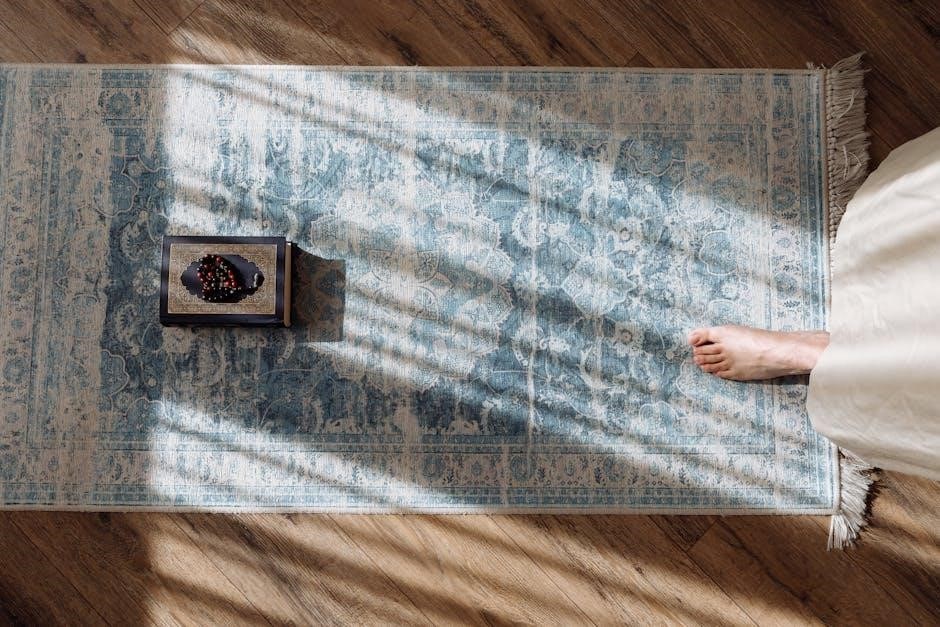
The Rituals Surrounding the Bedtime Shema
The Bedtime Shema Prayer is a central Jewish ritual recited before sleep, emphasizing faith, gratitude, and seeking forgiveness, typically before midnight to align with divine commandments.

When to Recite the Bedtime Shema
The Bedtime Shema is traditionally recited in the evening, ideally before midnight, to align with the divine commandments and conclude the day with spiritual reflection and forgiveness.
How to Recite the Shema: Tips and Guidelines
Reciting the Shema requires focus and intention. One should stand for the first verse, speak clearly, and avoid interruptions. It is advised to recite slowly, contemplating each word’s meaning, ensuring a meaningful connection to the prayer’s significance in Jewish tradition.
The Importance of Kavana (Intention) in Recitation
Kavana, or intention, is crucial when reciting the Shema. It involves focusing one’s mind and heart on the prayer’s meaning, ensuring sincerity and connection to the divine. Proper intention enhances the spiritual impact and makes the recitation more meaningful.
Time Constraints for Reciting the Shema
The Shema must be recited before midnight, as this marks the end of the day in Jewish tradition. The optimal time is shortly after sunset, aligning with the onset of night. Men are encouraged to recite it before 12:00 AM, while women and children have more flexible guidelines. Consistency is key, ensuring the prayer is said with proper intention and focus. Delaying beyond midnight is discouraged, as it may diminish the prayer’s efficacy. Time constraints emphasize the importance of prioritizing the Shema, reflecting its significance in daily Jewish practice. Adhering to these guidelines ensures the prayer is recited mindfully, fostering a deeper spiritual connection.
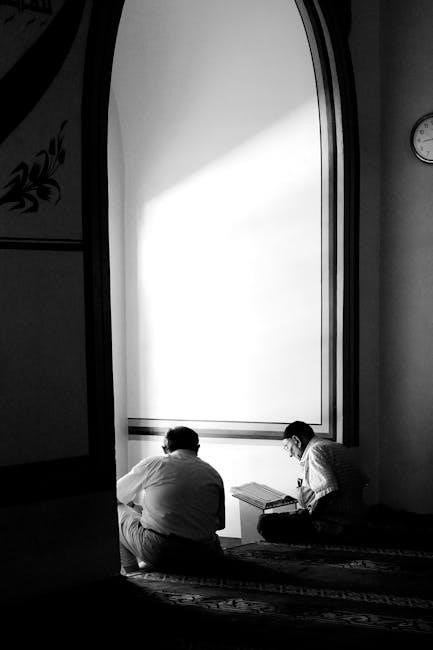
Significance of the Bedtime Shema in Jewish Life
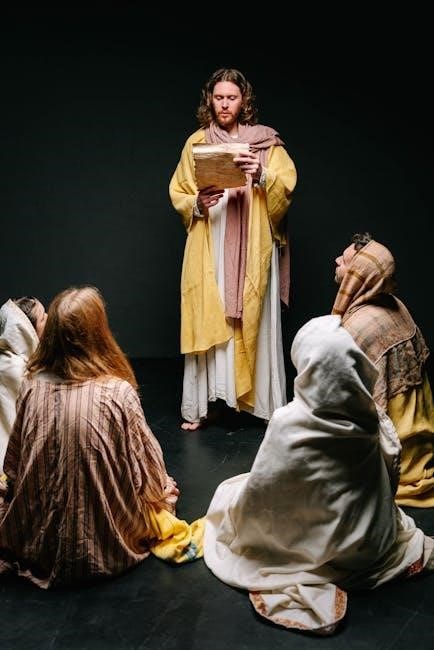
The Bedtime Shema Prayer is a cornerstone of Jewish practice, fostering spiritual grounding, emotional peace, and connection to faith, while expressing gratitude and seeking forgiveness before sleep.
Historical Context of the Shema Prayer
The Shema prayer has ancient roots, dating back to the Torah, where it appears in Deuteronomy (6:4-9, 11:13-21) and Numbers (15:37-41). Its recitation was mandated by Moses as a declaration of faith, emphasizing the unity of God and the obligations of Jews to follow His commandments. Over time, the Shema became a central part of Jewish liturgy, recited twice daily and at bedtime. Its inclusion in the bedtime ritual reflects its enduring significance, serving as a final expression of devotion before sleep, connecting generations to their faith and heritage through consistent practice and tradition, as noted in various sources on Jewish prayer customs and historical texts.
Symbolism and Meaning in the Shema Text
The Shema prayer holds profound symbolism, rooted in its declaration of faith in one God and the divine commandments. The text, drawn from Deuteronomy and Numbers, emphasizes loyalty to God, love, and obedience. The first verse, “Hear, O Israel, the Lord is our God, the Lord is one,” symbolizes the unity and singularity of God, a core tenet of Judaism. The command to “love the Lord with all your heart, soul, and might” underscores devotion and commitment. The text also symbolizes the transmission of faith, instructing to teach these words to children and discuss them at all times. Additionally, the Shema embodies the connection between faith and daily life, with its mention of wearing tefillin and affixing mezuzot, serving as reminders of divine presence and covenantal obligations.
The Role of the Shema in Daily Jewish Practice
The Shema prayer is a cornerstone of Jewish daily practice, recited twice daily, in the morning and evening, as well as at bedtime. It serves as a declaration of faith and commitment to God’s commandments, reinforcing the central tenets of Judaism. The Shema is integral to prayer services, forming the foundation of both Shacharit (morning) and Ma’ariv (evening) services. Its recitation is accompanied by specific rituals, such as wearing tefillin in the morning and touching mezuzot, which contain the Shema text, upon entering a home. The Shema also plays a crucial role in Jewish education, often being the first prayer taught to children, emphasizing its importance in transmitting faith across generations. Through its daily recitation, the Shema fosters a deep connection to Jewish identity and spiritual practice.
Connection to Other Jewish Prayers and Rituals
The Bedtime Shema prayer is deeply intertwined with other Jewish prayers and rituals, serving as a unifying thread in daily and lifecycle practices. It is recited during the Ma’ariv service, alongside other key prayers like the Shacharit and Mincha, creating a cohesive structure for worship. The Shema is also integral to rituals such as wearing tefillin in the morning and touching mezuzot, which contain its text. Additionally, the Shema is recited during the blessings before and after the Torah reading, further embedding it in Jewish liturgical life. Its themes of faith and divine sovereignty resonate in other prayers, such as the Amidah and Birkat Hamazon. The Shema’s recitation at bedtime and upon rising underscores its connection to daily transitions, while its use in lifecycle events, like birth and death, highlights its enduring significance in Jewish tradition.
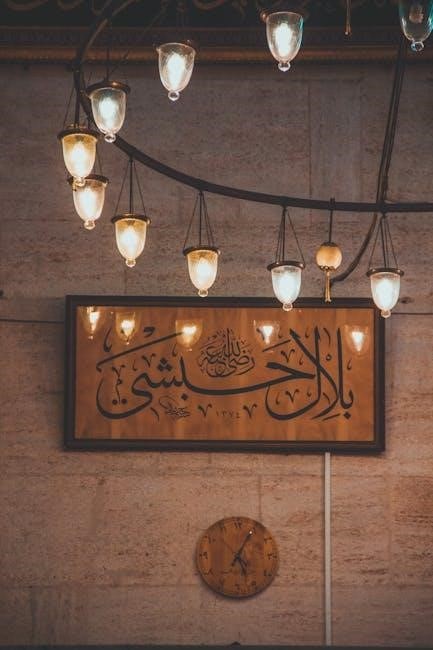
Practical Guide to Incorporating the Bedtime Shema
The Bedtime Shema is a simple yet meaningful ritual to incorporate into your daily routine. It involves reciting specific prayers before sleep, teaching children its significance, and reflecting on the day. Consistency and intention make this practice deeply enriching.
Step-by-Step Instructions for Reciting the Shema
Begin by washing your hands and ensuring you are in a calm, quiet environment. Recite the blessings before the Shema, expressing gratitude for the day. Then, say the Shema prayer slowly and intentionally, focusing on its meaning. Include additional passages from the Torah for completeness. Conclude with the blessing after the Shema, seeking protection and peace. Maintain proper posture and concentration throughout. For children, simplify the text and explain its significance. Consistency is key to making this a meaningful daily practice.
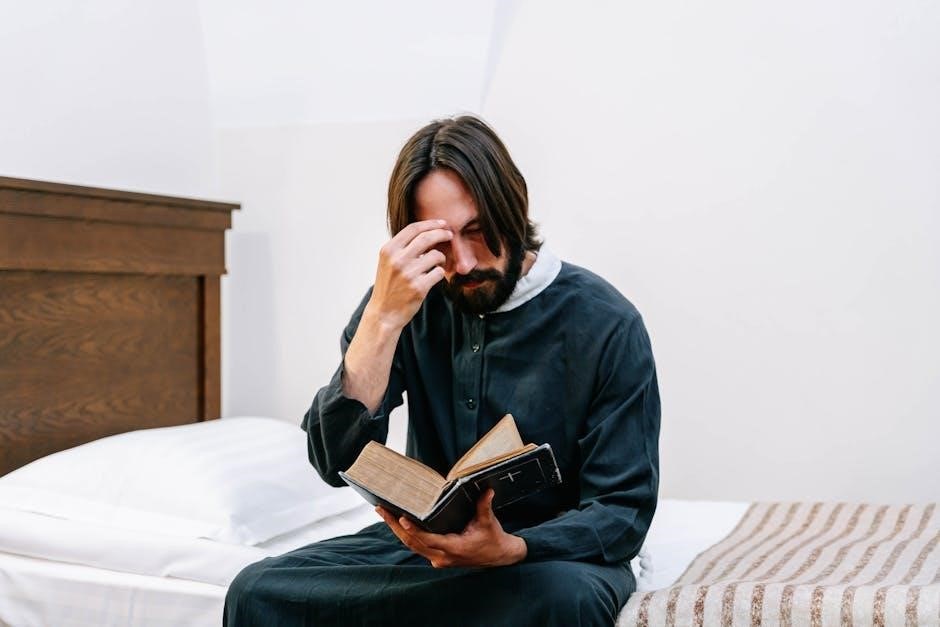
Common Challenges and Solutions
One common challenge is maintaining consistency in reciting the Shema, especially with busy schedules. To overcome this, establish a routine and set reminders. Another challenge is understanding the Hebrew text; using bilingual prayer books or online resources can help. Some struggle with distractions during recitation; finding a quiet space and minimizing interruptions is essential. For children, engaging them with simple explanations and making the practice interactive can foster participation. Additionally, time constraints can be managed by prioritizing the core components of the Shema to ensure it is recited even briefly. By addressing these challenges proactively, the Bedtime Shema can become a meaningful and enduring practice.
Teaching the Bedtime Shema to Children
Teaching the Bedtime Shema to children is a meaningful way to pass down Jewish traditions and foster a connection to faith. Start by explaining the prayer’s significance and its role in daily practice. Use simple, age-appropriate language to help them understand the text. Encourage them to recite it slowly and clearly, focusing on pronunciation and comprehension. Incorporate visual aids, such as bilingual prayer books or digital resources, to make learning engaging. Parents and guardians should model the practice, reciting it alongside their children to create a sense of routine and shared experience. Making the process interactive, such as through songs or discussions, can help children stay interested and invested in the tradition.
The Role of Parents and Guardians in Passing on the Tradition
Parents and guardians play a vital role in preserving the Bedtime Shema tradition by serving as primary educators and role models. They should create a conducive environment for learning, fostering a sense of curiosity and reverence. By reciting the prayer with their children, they demonstrate its importance and help build a consistent routine. Encouraging questions and discussions about the Shema’s meaning and significance can deepen understanding. Additionally, incorporating stories and historical context enhances the child’s connection to the prayer. Parents should also lead by example, showing dedication and sincerity in their own practice. This active involvement ensures the tradition’s continuity and strengthens familial bonds through shared spiritual experiences. Their commitment helps instill lifelong values and a strong Jewish identity in their children.

Benefits of Reciting the Bedtime Shema
Reciting the Bedtime Shema fosters spiritual grounding, emotional calmness, and gratitude while providing an opportunity for reflection, seeking forgiveness, and renewing faith before sleep.
Spiritual Grounding and Connection to Faith
Reciting the Bedtime Shema prayer provides profound spiritual grounding, reconnecting individuals with their faith and fostering a deeper sense of trust in God. This sacred ritual serves as a declaration of belief in the unity and sovereignty of God, reaffirming one’s commitment to Judaism. By reciting the Shema before sleep, one seeks divine protection and expresses gratitude for life’s blessings. It cultivates mindfulness and intention, known as kavana, helping to maintain spiritual focus. The prayer’s emphasis on loving God and adhering to His commandments strengthens faith and provides emotional and psychological comfort. This daily practice not only enhances spiritual connection but also fosters a sense of security and calmness, essential for a restful night and renewed spiritual vigor.
Emotional and Psychological Benefits
Reciting the Bedtime Shema prayer offers significant emotional and psychological benefits, fostering a sense of calm and inner peace before sleep. This practice helps reduce anxiety and stress, providing comfort and solace through its soothing words and reflective nature. The Shema’s emphasis on gratitude and divine trust encourages a positive mindset, promoting emotional balance and resilience. It also serves as a moment for introspection, allowing individuals to reflect on their actions and feelings, fostering self-awareness and personal growth. The routine nature of the prayer creates a sense of stability and security, which can be particularly comforting during challenging times. By integrating the Shema into bedtime rituals, one can cultivate mental clarity, emotional well-being, and a deeper connection to their faith, ultimately enhancing overall mental health and quality of life.
Reflection and Gratitude Before Sleep
Reciting the Bedtime Shema prayer fosters a moment of reflection and gratitude, encouraging individuals to pause and acknowledge the blessings in their lives. The prayer’s words, such as expressing thanks for the restoration of the soul, cultivate a sense of appreciation and humility. This practice invites introspection, allowing one to reflect on the day’s events, actions, and experiences, while also seeking forgiveness for any wrongdoing. By focusing on gratitude, the Shema helps shift one’s mindset to the positive aspects of life, promoting emotional well-being and inner peace. This reflective process not only enhances sleep quality but also strengthens spiritual connection, making it a meaningful way to conclude the day and prepare for restful sleep.
Seeking Forgiveness and Renewal
The Bedtime Shema prayer serves as a profound opportunity for seeking forgiveness and renewal. Reciting the Shema allows individuals to reflect on their actions and seek pardon for any wrongdoing, fostering a sense of moral accountability. The prayer’s emphasis on divine mercy and faithfulness encourages believers to humbly acknowledge their imperfections and seek spiritual cleansing. This process of self-reflection and repentance is deeply therapeutic, promoting emotional healing and inner peace. By expressing gratitude for the restoration of the soul, the Shema also symbolizes renewal, offering a fresh start and a chance to align oneself with divine will. This sacred ritual not only strengthens one’s connection to faith but also cultivates a mindset of humility, forgiveness, and spiritual growth, preparing the heart and mind for rest and the challenges of the next day.
The Bedtime Shema Prayer is a vital Jewish tradition offering spiritual grounding, emotional peace, and renewal. It enriches faith, fosters gratitude, and prepares for restful sleep.
Final Thoughts on the Bedtime Shema Prayer
Reciting the Bedtime Shema is a meaningful practice that strengthens spiritual connection, encourages reflection, and fosters gratitude. It provides a moment to slow down, reflect on the day, and seek divine forgiveness, promoting emotional well-being and a sense of renewal. This prayer, rooted in tradition, serves as a powerful tool for personal growth and faith deepening. By incorporating it into daily life, individuals can cultivate a deeper appreciation for Jewish heritage while finding peace and closure before sleep. The Bedtime Shema is not just a prayer but a profound ritual that enriches both the heart and the soul, offering lasting spiritual benefits.
Encouragement to adopt the Bedtime Shema Practice
Embracing the Bedtime Shema practice offers a profound way to nurture your spiritual and emotional well-being. By incorporating this meaningful ritual into your daily routine, you create a moment of connection to faith, self-reflection, and gratitude. The Shema’s timeless words provide comfort and guidance, helping to unwind the mind and soothe the heart before sleep. Adopting this practice fosters a deeper sense of purpose and renewal, allowing you to approach each day with clarity and intention. Whether you’re new to the tradition or revisiting it, the Bedtime Shema is a beautiful way to strengthen your spiritual foundation and find peace. Take the first step—try reciting the Shema tonight and experience its transformative power for yourself.
